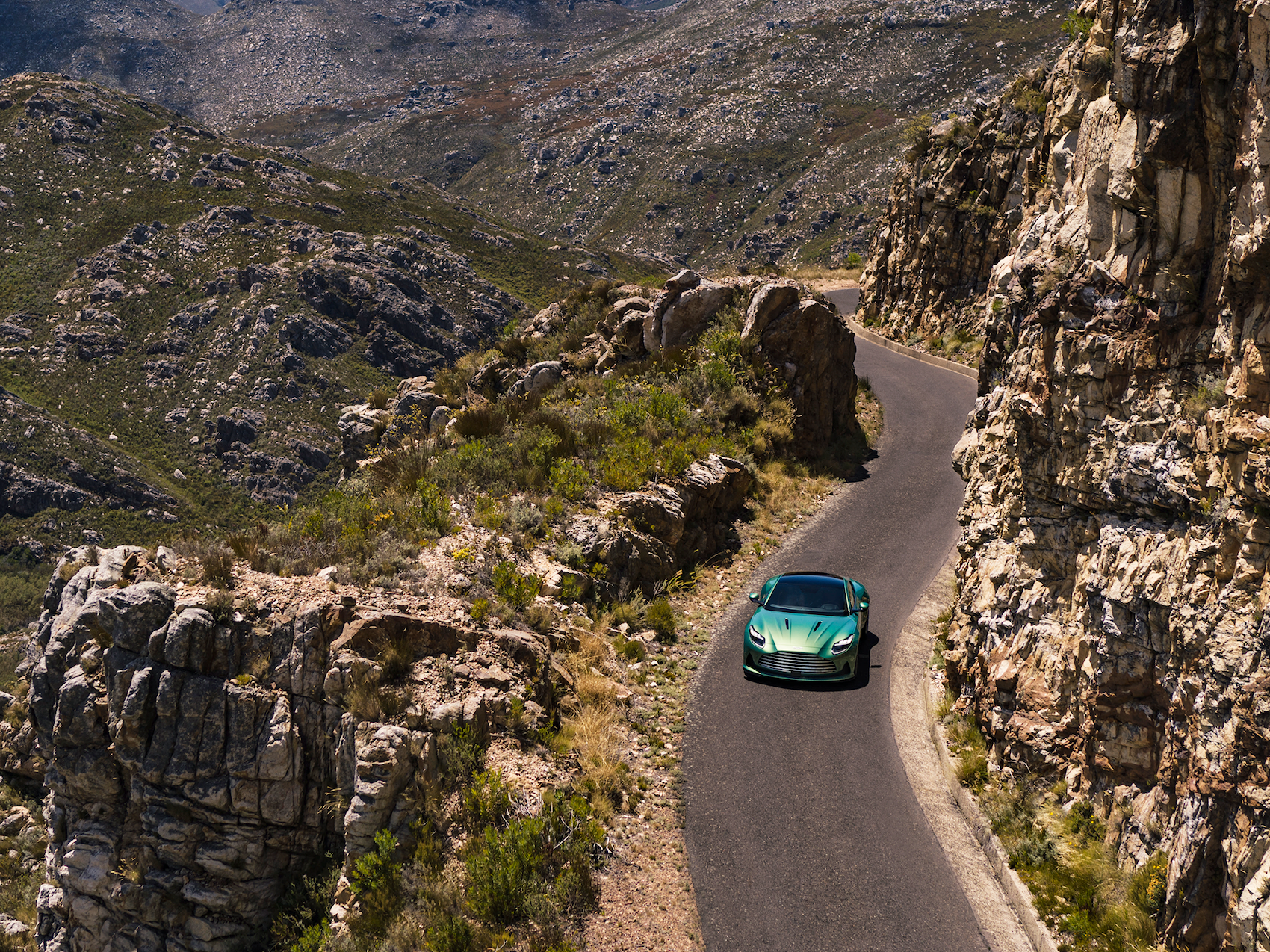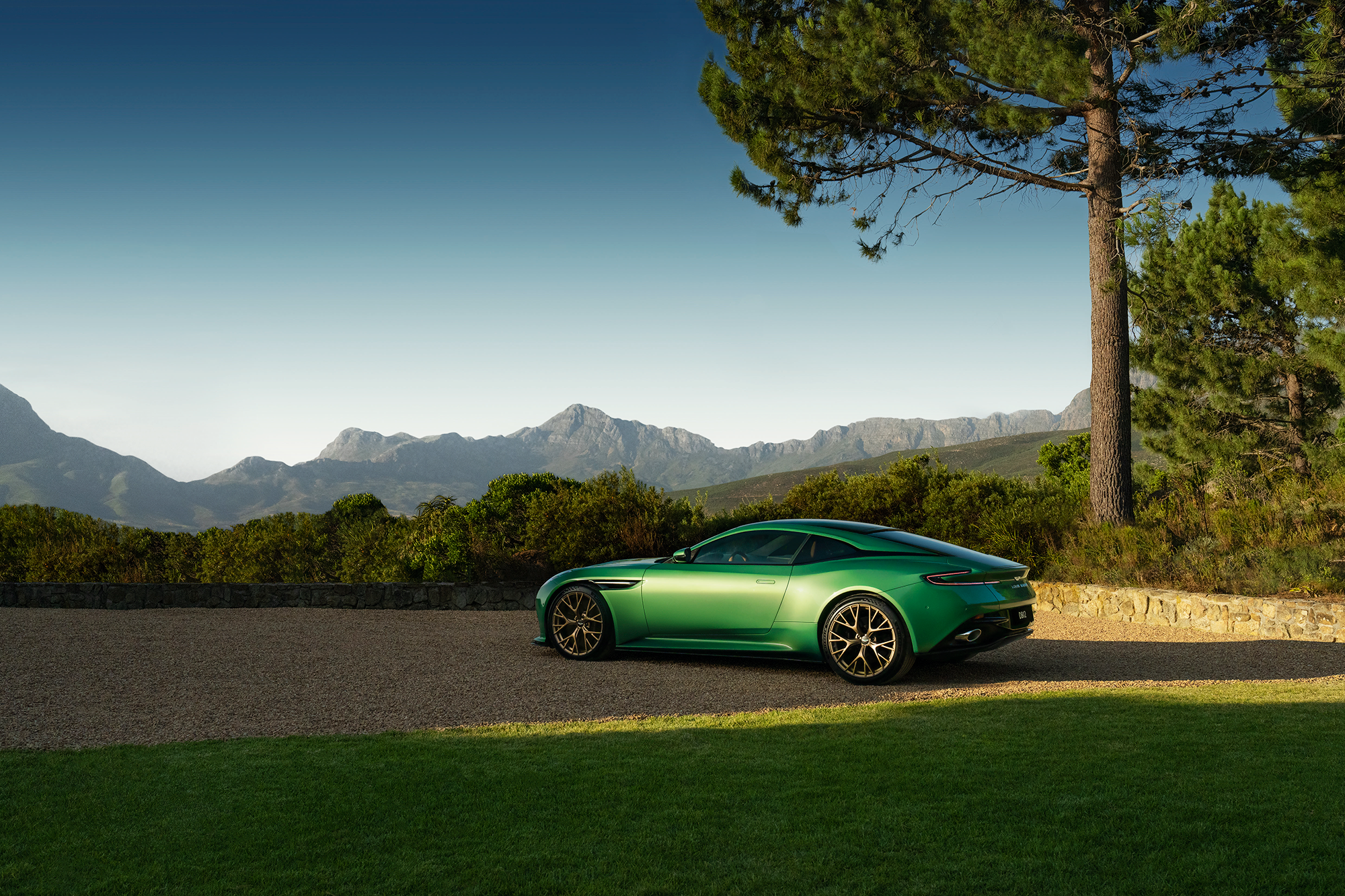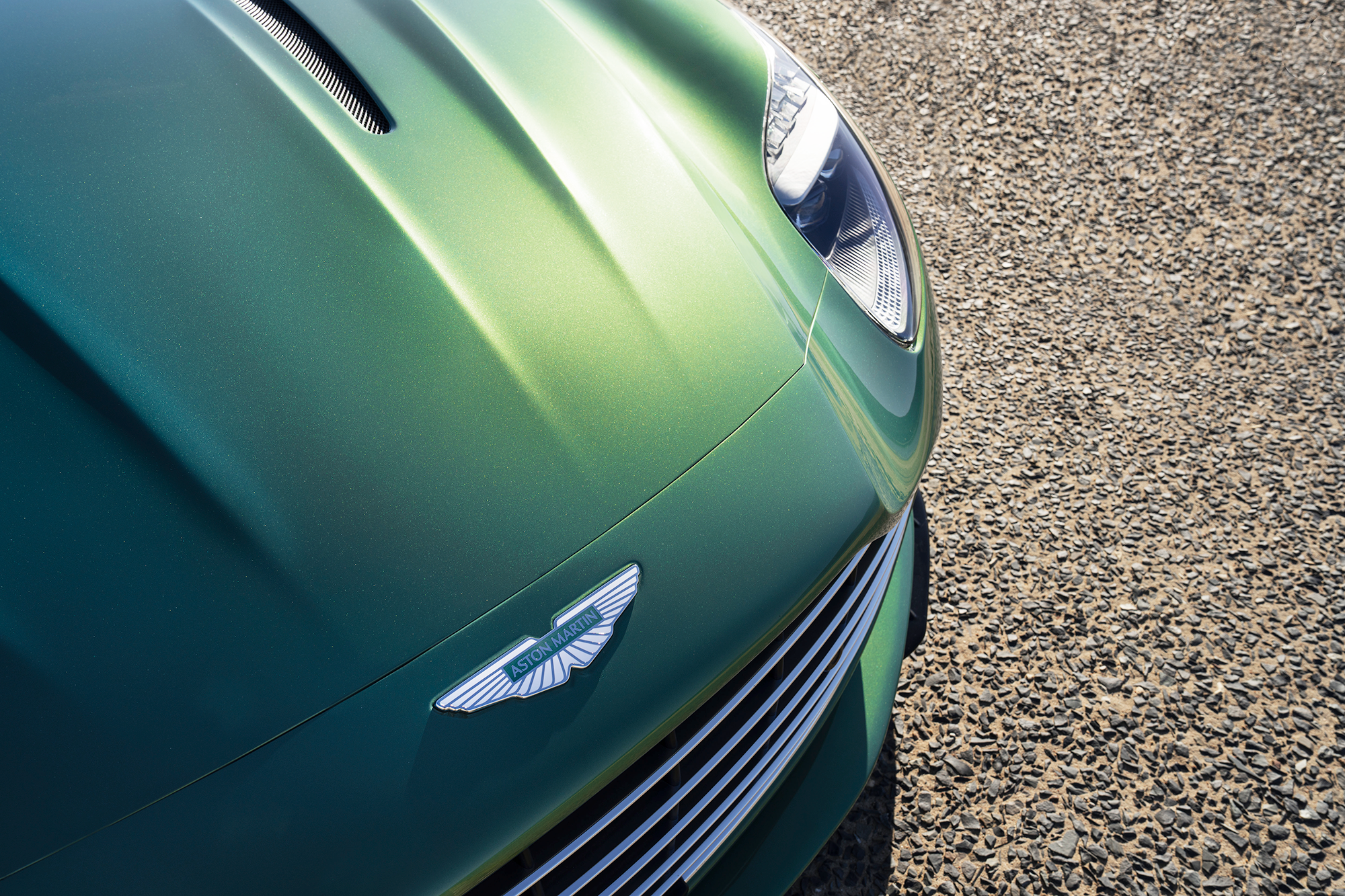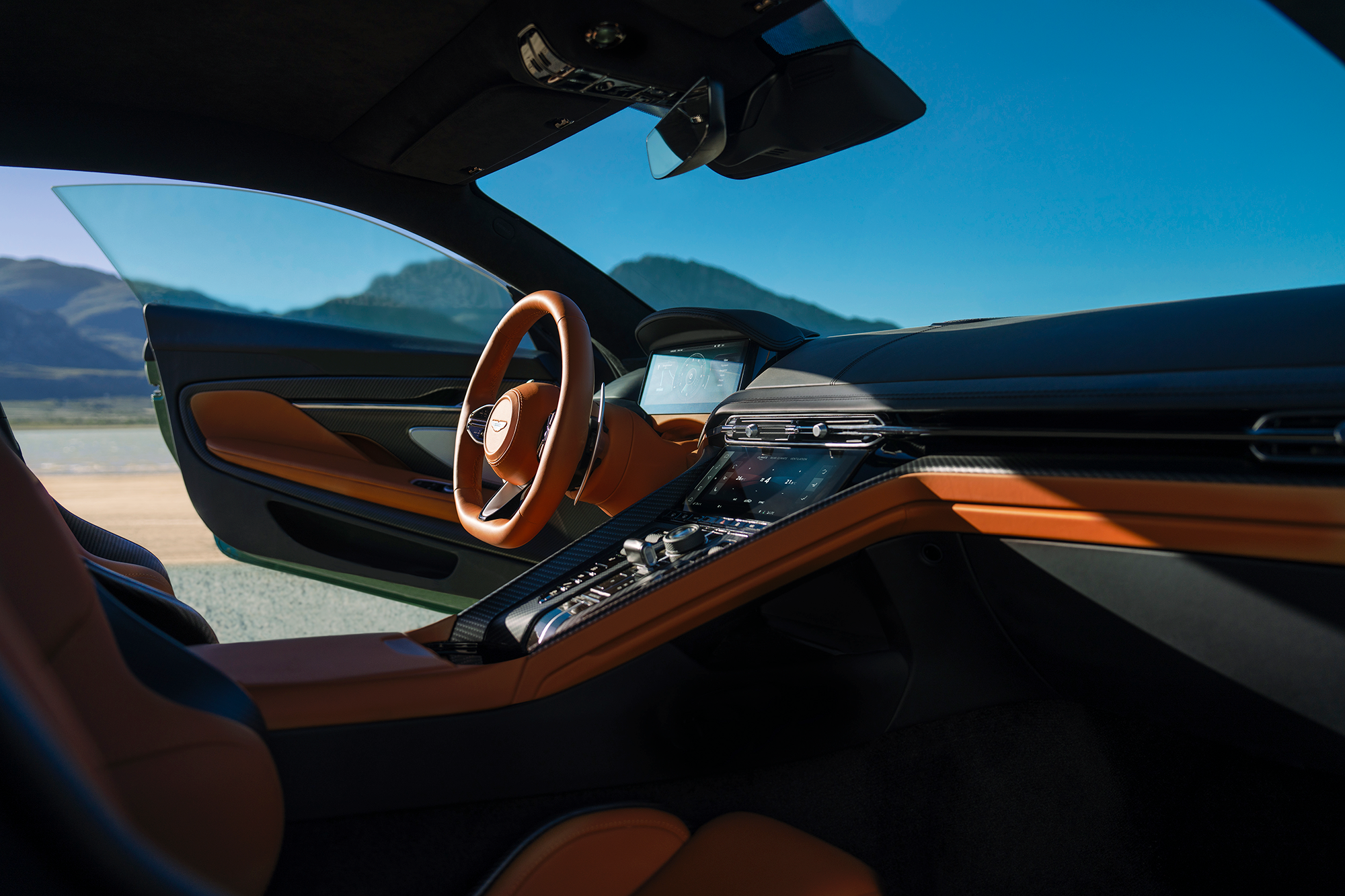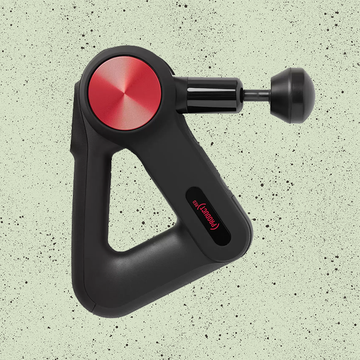You know that moment when you emerge from a side road hoping to join a queue of traffic only to realise that, no matter how sweetly you smile, no one is going to let you out? It’s hard enough to appeal to your fellow driver’s good nature if you’re driving a battered Vauxhall Corsa, but if you’re in a gleaming supercar that does 14mpg with a private number plate and a carbon body pack, you may as well just switch the engine off and check your food supplies. Simply put, people would rather drive into the car in front than acknowledge your existence. Eventually, desperate and possibly dehydrated, you’ll be forced to shove your oversized bonnet into the thoroughfare to a hail of horns, so cementing the pushy and entitled reputation that got you here in the first place. You could call it Bentley’s Law; the more expensive the vehicle, the longer the wait.
There is one strange exception, though. In an Aston Martin, I’ve experienced drivers almost eager to offer up space, and who cheerfully flash you to go ahead. The first time I thought it might be a trap. When I realised they were serious I was so surprised and grateful that I nearly caused an accident looking for the hazard lights to perform that winking thank you that has mysteriously superseded the waving human hand.
Why such goodwill for Aston? Perhaps people feel a sense of British loyalty, and the Bond connection must have broadened its appeal. It probably helps, too, that they look good, and are, less posey than some notable rivals.
There could be an underdog story at play here too. It’s famously been a volatile few years at Aston, with enough lawsuits and buy-outs to warrant at least a BBC three-parter. Aston hasn’t exactly been a stranger to turbulence throughout its 110-year history. You’d need two hands to count how many times it’s gone bust, for a start.
Its most influential owner was David Brown, a car nut who, while running his family’s Yorkshire tractor company, saw a notice in The Times in 1947 advertising the sale of a “High Class” motor company. Discovering it was Aston Martin, reeling after World War II, he bought it for £20,500, later acquiring Lagonda to make the engines.
Over the next decade he managed to take it from a failing low-volume sports-car maker to a Le Mans winner. The early cars in the DB line — named rather humbly from his own initials — set the standard for the modern Aston Martin brand. The DB5, of course, driven by Sean Connery in Goldfinger, gave it global fame. Connery was originally set to be driving a Jaguar E-Type, but Jaguar felt the film’s producers should be covering the costs of providing cars. Aston got the call and wisely didn’t object to paying its own way. This symbiotic relationship, uncontracted, still stands today.
Brown sold the company in 1972 to focus on ship-building, and the DB line looked to have ended. After Ford took over during another downturn, Aston’s then-chairman asked Brown for permission to use his initials once more for the Ian Callum-designed DB7, which launched in 1994 and revived the DB line for the modern era. Now we have the unofficial first DB car of yet another new era under its current owner, the Canadian Lawrence Stroll. And the DB12 shows what some care and investment can do.
It’s wider and stockier than the outgoing DB11, its pinched and precise contours keeping it contemporary while remaining reassuringly familiar to its predecessors, and that feels like a good thing. Porsche has always managed to evolve the 911 at the right speed and, with the heritage of the DB line, Aston has something that may one day bear some comparison.
Aston is calling it the world’s first “Super Tourer” — a catchy way of saying it can be whatever you want it to be: a road-trip cruiser, supercar, even daily driver if you’re that way inclined. Such is its ability to marry refinement and power, it really can switch personalities.
And power it isn’t short of. There’s no V12-engine option this time round; just the existing AMG-sourced twin-turbo V8, which, thanks to larger turbo chargers and improved cooling systems, produces 671hp — nearly 150hp more than the DB11. It translates to suitably eye-watering numbers, hitting 60mph in 3.5 seconds and promising a top speed of 202mph if you have access to an unused runway.
With a new suspension, faster gearbox and exceptional handling, it remains composed, precise and dignified — even when driven to its considerable limits.
It’s in the cabin, though, that the most welcome leaps have been made. The tech in previous Astons always felt a little underwhelming, even unbecoming, with all the intuitive charm of a Noughties laptop.
I wouldn’t have been the first to shove a finger at the screen of the otherwise stellar Aston Martin DBX 707 only to find it wasn’t a touchscreen at all. That’s a car that launched in 2022 and costs nearly £200,000.
So, for the first time, Aston has designed and built its screens in-house, which now sit seamlessly within the dashboard, affording far better feng shui and allowing the materials and analogue dials to shine. Owners can add personalised details via Aston’s bespoke team, which, naturally enough, is called “Q”.
With Porsche and Bentley as rivals, Aston needed to step up here. That it has comes as something of a relief. In a way, its previous clunkiness was emblematic of Aston’s travails — a little behind and underinvested. Perhaps this new standard indicates a rosier and more competitive future.
In the car business, there are few things as liable to produce hot sweats in the marketing department as a looming anniversary and in 2023 Aston has offered us three: 110 years since it was founded, 75 years since the start of its DB line and 60 years since the DB5. It could have added a fourth: it’s 30 years since David Brown died in Monaco aged 94. A speed freak till the last, he was heard complaining that his catamaran wouldn’t go faster than 34 knots at the age of 89.
It’s fair to assume he’d be pretty happy with the latest car to bear his initials. Accomplished, unflappable, phenomenally fast but with plenty in reserve — a grown-up Aston Martin inside and out that looks great from any angle, including the rear. Another good reason, if you see one on the road, to let it go in front of you. ○
